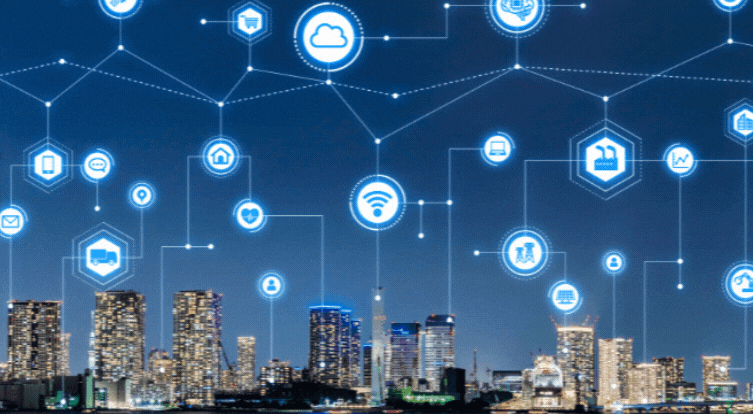
Smart cities are the future. They offer better and safer urban life. And, importantly, they can do it while saving money. Juniper research is predicting that smart cities transportation systems could be saving cities as much as $277 billion as soon as 2025! Caught your attention, right?
One of the keys to achieving such dramatic results is through reducing emissions and slashing congestion using advanced intelligent transportation systems that utilize multi-layered data and mobility intelligence to get traffic management under control.
Using smart cities transportation systems to reduce congestion
Sadly, there is no simple answer to the question of how to reduce traffic. Transportation is complicated and involves an intricate interplay of many complex variables. That is why intelligent transportations systems are required, and why they must be fed multi-layered data integrating diverse sources.
Take for example adaptive traffic signalling. The traffic light systems that are in place today have a lifespan of between 1 to 2 decades, so many have not integrated 21st Century tools. There are cities that still rely on preset timers for traffic lights. In a smart city, adaptive traffic control replaces the timer with data from vehicles, using it to make decisions in real-time about whether a light should remain red or turn green in order to keep the traffic flowing.
This takes into consideration multiple variables including not only the number of cars currently waiting, but also road conditions such as friction, the weather, congestion up and down the road, hazards and even a desirable average speed. Places where data driven smart traffic lights have been implemented are already showing results with as much as a 25% reduction in travel time, idling reduced by 40%, and 20% fewer emissions and more.
Additional solutions such as working with delivery companies and truck drivers to reduce the number of large vehicles on the road during peak hours, offering toll incentives or delivery-only lanes to reduce or streamline their numbers, planning for better public transport, providing micro-mobility solutions, preparing for electric vehicles and more all require deep, rich data.
Some smart city transportation solutions need near real-time data availability too. Alerts for accidents or go-slows, and offers of alternate routes for example, or an integration with other traffic infrastructure such as dynamic speed signals or adaptive driving lanes that can intelligently route vehicles using AI and machine learning.
This all starts with the data, understanding who is using the roads, when, and how that’s contributing to overall congestion.
Smart cities for smart parking, public transport, and more
Using advanced intelligent transportation systems can improve every facet of traffic in a smart city. Did you know that drivers spend an average of 17 hours each year looking for parking? Cruising for parking is one of the worst driving practices, causing massive congestion in urban traffic. Using smart cities transportation systems and mobility intelligence, some of that pain can be alleviated by securing parking efficiently pre-journey, or by directing traffic to parking rich areas in real-time.
Relevant and timely parking availability information can be targeted (for example sending disabled bay availability) or aggregated (for example an alert when parking is all but gone in an area). Data can be used to accurately gauge needs – such as whether a multi-storey parking lot is necessary, how long to limit parking for, or what hours of the day to restrict parking in, in order to allow better traffic flow. Understanding the origin-destination matrix, and even more so using mobility intelligence to find out via which route traffic is flowing, can be used to direct drivers to parking that is a little further away from their exact destination, but is available.
Reliable public transport is required to get to work or school, move around the city with ease, and to provide accessible options for those who cannot or do not want to drive. Millennials consider public transport to be the best option for connecting with communities, and also for digital socializing. APTA believes public transportation is 10 times safer per mile than any other mode of transportation. For citizens to use public transport effectively, and for it to replace private vehicle use, stakeholders need to understand it, and the alternatives deeply, and use real data to consider timing and placement for new stops and routes as well as implement new tools like micro mobility.
Better decision making
Using smart cities transportation systems is a key part in what makes a smart city smart. It enables decisions that are based on multi-layered data rather than guesswork and gut feelings, and empowers:
- Planning long term projects, such as deciding to add an extra lane to a highway or even paving a new road
- Enacting, measuring and assessing tactical urban solutions, like taking away or adding parking along a road, or closing off a street during certain hours.
- Adapting to changes, such as providing charging stations for EVs or placing micro-mobility stations
- Reacting in real-time to a changing and dynamic environment, like smart signaling, dynamic rerouting and hazard relief
Supporting smarter decisions is good for its own sake. But it has been proven time and time again that it also saves money and gets better ROI for any municipale or transportation project.
Step into the future of smart cities with us! Take some data and insights for a spin and see how they can supercharge your smart city strategy.
Start today by speaking with a data expert. Make an appointment here.













More Stories
Click Shield from MIKROE simplifies integration of Arduino Portenta with over 1600 Click boards
Optimizing Mid-Power Silicon MOSFETs for Automotive Applications
Paolo Pininfarina named the 2024 Laureate of The American Prize for Design